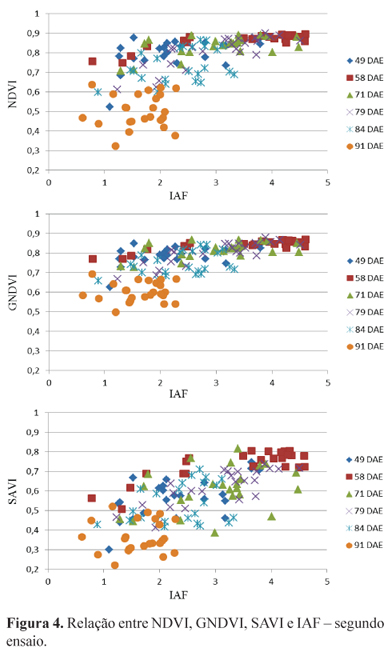The objective of this work was to study the spectral response of bean plants infected by Sclerotinia sclerotiorum, the causal agent of white mold. Two experiments were conducted using a randomized block design with five treatments and four replications in the first trial and six treatments and four replications in the second. Measurements of canopy spectral reflectance of wavelengths between 400 and 850 nm were taken at 60, 71, 91 and 102 days after emergence (DAE) in the first trial and at 13, 27, 34, 56, 71 and 91 DAE in the second. Spectral data were transformed into vegetation indices: the normalized difference (NDVI), the green normalized difference (GNDVI) and the soil adjusted (SAVI). The white mold severity was visually assessed at 102 DAE in the first trial and at 92 DAE in the second. A significant correlation between disease severity and NDVI was found only at 71 DAE in the second trial. The bean crop spectral response can be used to detect white mold occurrence and, consequently, as an integrated management tool.
dry bean (Phaseolus vulgaris L.); precision agriculture; remote sensing; vegetation index












